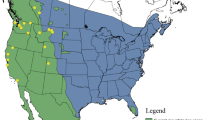Abstract
Developing models to predict animal movement patterns is an important area of study in ecology and wildlife management. Project Limulus, a community research program, has been tracking the movement of tagged American horseshoe crabs (Limulus polyphemus) in Long Island Sound since 1998. During the spawning season, horseshoe crabs are captured by hand, tagged and then released. Recaptured horseshoe crabs give valuable information about their behavior and movement patterns. In this paper, we tested various models to find the best predictor for the movement of horseshoe crabs based on the observed movement activity in previous years. We experimented with three different models: Linear Regression, Decision Tree, and Random Forest Regression models. We used the data for 2018 as our test set and the data of all previous 19 years as our training set (19,219 records). The Random Forest Regression model proved to be the best predictive model and resulted in the smallest RMSE and MAE, as well as the smallest maximum error in prediction. The predicted horseshoe crab locations can be targeted in the next season for recapturing tagged horseshoe crabs. It also concentrates the scientists’ effort and time to find the maximum number of horseshoe crabs.
Access this chapter
Tax calculation will be finalised at checkout
Purchases are for personal use only
Similar content being viewed by others
References
Allen, A., Singh, N.: Linking movement ecology with wildlife management and conservation. Front. Ecol. Evol. 3, 155 (2016). https://doi.org/10.3389/fevo.2015.00155
Fraser, K., Davies, K., Davy, C., Ford, A., Flockhart, D., Martins, E.: Tracking the conservation promise of movement ecology. Front. Ecol. Evol. 6(150), 1–8 (2018)
Benson, E.: Wired Wilderness: Technologies of Tracking and the Making of Modern Wildlife. The Johns Hopkins University Press, Baltimore (2010)
Peniche, G., Vaughan-Higgins, R., Carter, I., Pocknell, A., Simpson, D., Sainsbury, A.: Long-term health effects of harness-mounted radio transmitters in red kites (Milvus milvus) in England. Vet. Rec. 169, 311 (2011)
Li, Z.: MoveMine: mining moving object data for discovery of animal movement patterns. ACM Trans. Intell. Syst. Technol. (TIST) 2(4), 1–32 (2011). Article no. 37
Krisfalusi-Gannon, J., et al.: The role of horseshoe crabs in the biomedical industry and recent trends impacting species sustainability. J. Front. Mar. Sci. 5, 185 (2018)
Mattei, J., Kasinak, J., Senbel, S., Bartholomew, K.: The power of citizen science: 20 years of horseshoe crab community research merging conservation, education and management. In: Tanacredi, J.T., et al. (eds.) 4th Proceedings of Horseshoe crab Conservation and Biology, Springer-NATURE (2021, in press)
Beekey, M., Mattei, J., Pierce, B.: Horseshoe crab eggs: a rare resource for predators in Long Island Sound. J. Exp. Mar. Biol. Ecol. 439, 152–159 (2013)
Project Limulus. www.projectlimulus.org. Accessed 30th Aug 2020
Bakibayev, T., Kulzhanova, A.: Common movement prediction using polynomial regression. In: 2018 IEEE 12th International Conference on Application of Information and Communication Technologies (AICT), Almaty, Kazakhstan, pp. 1–4 (2018)
Bopp, J., Sclafani, M., Smith, D., et al.: Geographic-specific capture-recapture models reveal contrasting migration and survival rates of adult horseshoe crabs (Limulus polyphemus). Estuaries Coasts 42, 1570–1585 (2019)
James-Pirri, M.: Seasonal movement of the American horseshoe crab Limulus polyphemus in a semi-enclosed bay on Cape Cod, Massachusetts (USA) as determined by acoustic telemetry. Curr. Zool. 56(5), 575–586 (2010)
Wada, T., Mitsushio, T., Inoue, S., Kioke, H., Kawabe, R.: Movement patterns and residency of the critically endangered horseshoe crab Tachypleus tridentatus in a semi-enclosed bay determined using acoustic telemetry. PLoS ONE 11(2), e0147429 (2016)
Youssef, I., Senbel, S., Kasinak, J.E., Mattei, J.: RCrab: an R analytics tool to visualize and analyze the movement of horseshoe crabs in long island sound. In: 2019 IEEE Long Island Systems, Applications and Technology Conference, NY, USA, pp. 1–6 (2019)
Van Rossum, G.: Python tutorial, Technical Report CS-R9526. Centrum voor Wiskunde en Informatica (CWI), Amsterdam, May 1995. http://www.python.org. Accessed 5th Sep 2020
Swan, B.: Migrations of adult horseshoe crabs, Limulus polyphemus, in the middle Atlantic bight: a 17-year tagging study. Estuaries 28, 28–40 (2005)
Goldstein, H.: Multilevel mixed linear model analysis using iterative generalized least squares. Biometrika 73(1), 43–56 (1986)
Shalev-Shwartz, S., Ben-David, S.: Chapter 18. Decision trees. In: Understanding Machine Learning. Cambridge University Press (2014)
Ho, T.: Random decision forests. In: Proceedings of the 3rd International Conference on Document Analysis and Recognition, Montreal, QC, pp. 278–282, August 1995
Acknowledgment
We thank the US Fish & Wildlife Service for their support with the tagging program, CT Sea Grant, Disney Conservation Fund, The Nature Conservancy, Audubon CT, CT Audubon Society, Sacred Heart University undergraduate Biology Majors, and the College of Arts and Sciences for funding and time supporting this project.
Author information
Authors and Affiliations
Corresponding author
Editor information
Editors and Affiliations
Rights and permissions
Copyright information
© 2021 Springer Nature Switzerland AG
About this paper
Cite this paper
Senbel, S., Kasinak, JM.E., Mattei, J. (2021). A Random Forest Regression Model for Predicting the Movement of Horseshoe Crabs in Long Island Sound. In: Gervasi, O., et al. Computational Science and Its Applications – ICCSA 2021. ICCSA 2021. Lecture Notes in Computer Science(), vol 12952. Springer, Cham. https://doi.org/10.1007/978-3-030-86973-1_8
Download citation
DOI: https://doi.org/10.1007/978-3-030-86973-1_8
Published:
Publisher Name: Springer, Cham
Print ISBN: 978-3-030-86972-4
Online ISBN: 978-3-030-86973-1
eBook Packages: Computer ScienceComputer Science (R0)




